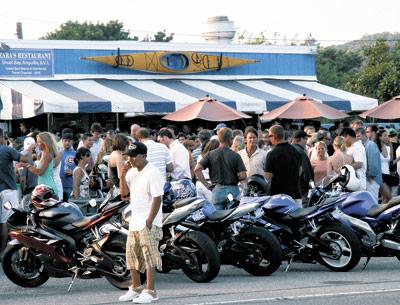Nightspots May Be in the Crosshairs

Provisions of the New York State Building Code — particularly those that deal with maximum occupancy and toilet facilities — could impose limits on restaurants and bars whose activities extend into outdoor space.
In a letter sent recently to businesses that could be affected, David Browne, East Hampton Town’s chief fire marshal, outlined the provisions of the code — “to be proactive,” he said on Tuesday.
Numerous seasonal establishments, particularly in Montauk, have prompted complaints in recent summers from residents saying that the use of patios and lawns has drawn large and disruptive crowds. But some town officials had said they were powerless to control outdoor gatherings.
Mr. Browne asked the recipients of his letter to “review current activities, and see how these code requirements may affect your particular occupancies. This will be one of the issues this office will be looking at closely.”
The East Hampton Town Board was apparently unaware of the occupancy-related laws affecting outdoor crowds. Last summer, board members had contemplated adopting a local law tying outdoor occupancy to square footage. Some board members suggested that expanded use of outdoor areas might trigger a requirement that bars and restaurants obtain mass-gathering permits from the town for events, or that the town might require review and new approval from the town planning board.
Mr. Browne said this week that, along with setting a maximum allowable occupancy for indoor spaces, fire marshals are asked to determine maximum occupancy for outdoor areas if they are enclosed or if there is limited egress. However, the provisions outlined in his letter, he said, apply to open areas even when maximum occupancy is not set.
According to the law cited in Mr. Browne’s letter, one “water closet” per 40 people or one “lavatory” for 75 people are required at nightclubs and bars for new establishments or existing ones that have “a change in purpose or level of activity within a building,” including expansion into outdoor areas.
Tina Piette, a local attorney, drew the town board’s attention to the letter at a meeting last Thursday, and asked why it was issued. She said several business owners had asked her about it. “Nobody has ever received a letter like this,” she said. “I can say this for a fact. Are they targeting me, as a friend of these places?” she asked.
Town board members were unfamiliar with the letter. But, Councilwoman Theresa Quigley said, “This is a legal interpretation of something that’s going on. I think we need to determine who authorized it.”
Mr. Browne noted this week that in some cases the Suffolk Health Department sets an establishment’s maximum occupancy at fewer people than fire marshals do. However, he said, fire marshals cannot enforce the health codes; only the Health Department can.
In addition, he said, during night checks of places that are crowded regularly, fire marshals often find that the establishment itself is not over its occupancy limit but that large crowds are gathered outside waiting to be let in.
That situation is not clearly regulated, he said, but is often among what residents have been complaining about.
